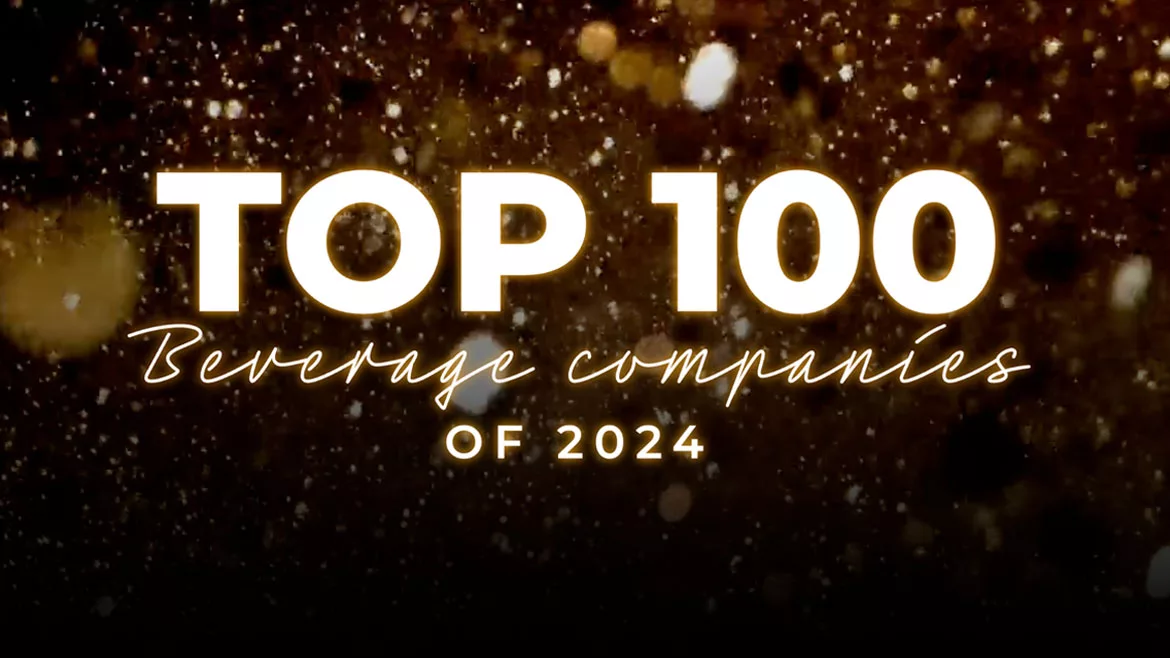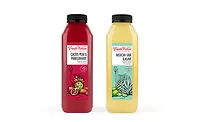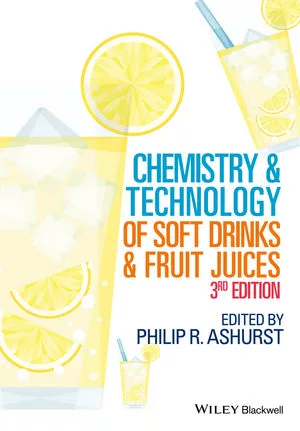Tag Technology: You're it!
Tag Technology: You’re It!
BY ELIZABETH FUHRMAN
New coding equipment provides faster, cleaner and more precise markings
Product safety, quality and authenticity rank as three top concerns that coding technology addresses. For example, in the instance of a recall, or even when a consumer is concerned about freshness, the coding information printed on a beverage package becomes critical in identifying the product and determining the production date. In the case of authenticity, the high-end wine industry is beginning to use complicated codes to make the labels harder to counterfeit.
Laser and inkjet coding both
offer suitable solutions to coding.
Technology has elevated both coding
methods to match high bottling
speeds, while not sacrificing quality
or precision. Laser marking can be
used for marking numerical codes,
two-dimensional matrix and bar
codes, logos and symbols all onto a
wide range of substrates, including
coated paper stocks, glass and plastic.
Lasers do not require inks,
stamps or ribbons to generate a
code.
The two most common methods
of laser coding products in beverage
applications are ablation and
surface modification.
“In the ablation method, heat
from the invisible laser light is
focused on the product or package,
resulting in removal of a small
amount of material from the surface,”
explains Paul Schildhouse,
laser product manager
for North America at VideoJet
Technologies Inc., Wood Dale,
Ill. “The most common way
laser coders create a mark on
food and beverage products is
by removing a thin layer of ink
from the package. Other examples
of ablation include removing
the top layer of a foil pouch
or etching glass beer or wine
bottles.”
The second method of laser
coding, surface modification,
melts or alters the surface of a
product or package in order to
create the code. “This method is
extremely popular for marking
PET containers in beverage bottling
applications, but is also
used for marking bottle caps as
well as many other plastic containers,”
Schildhouse says.
Laser coding PET beverage
bottles is a fast growing part of
the market, says Jon Hall, U.S.
laser business manager at Domino
Amjet, Gurnee, Ill. “In PET, we are
really seeing a trend toward high
speeds,” he says. “Blowmolders
want to make more bottles faster or
beverage companies want to fill
more bottles faster.”
Another trend in PET bottling is
to reduce the weight of the bottles,
which in turn yields thinner walls
on the containers. “As they lighten
up these containers, there is
increased interest in the functionality
of the laser codes that they are
putting on the containers so they
are not compromising the integrity
of the containers,” Hall says.
Domino Amjet has created a
code that’s more of a surface disruption
than ablation, such as
changing a color on the surface, for
thinner-walled PET containers. “We
have a high-contrast code, a highfrosted
code, rather than depending
on engraving deeply into the bottle
to get a code,” Hall says. “That’s
really the key for PET. You want to
get a nice high-contrast, superficial
mark.”
Mechanical positioning and
expertise are essential when working
with PET, Hall says. “To do the
coding right, you have to not only
have the right form factor of the
product, you have to have the right
wavelength or the right wavelength
blend,” he explains. “You have to
do motion sensing of the product.
You have to do good product detection.
You have to understand software
and fonts.”
Laser coding solutions
Marking and coding system
providers continue to improve, and
are raising the level of equipment
available for beverage companies.
For applications demanding fast
and flexible data transfer and marking
processes, such as beverage bottling
and brewing, Videojet
Technologies developed the 50-watt
Videojet 3430. “It is able to mark
2,000 characters per second, and is
capable of line speeds up to 50 feet
per second,” Schildhouse says. “An
IP65-rated housing increases reliability
even in wet environments.
Because of its integrated user interface,
small marking head and flexible,
articulated arm, the laser integrates
quickly and easily into any
beverage production line, and
allows the system to be moved to
different lines as coding needs
change.”
Videojet Technologies also offers
the 10-watt Videojet 3120 laser
coder for marking on PET containers,
paper, cardboard and carton
packages. “The Videojet 3120 marks
complex, multi-line alphanumeric
messages, foreign language fonts,
graphics, symbols and machinereadable
codes,” Schildhouse says.
The laser can apply a variety of
code types: expiration and manufacture
dates, ID matrix and bar
codes, logos and symbols, and individual
data such as serial numbers,
batch and lot codes and weight
specifications.
The company also provides the
30-watt Videojet 3320 that can permanently
mark on glass, plastic,
cardboard and labels. The laser
coder prints standard and twodimensional
bar codes, expiration
dates, batch and lot codes, serial
number, symbols, and manufacturer
names and logos at a rate of
1,300 characters per second.
Domino Amjet’s products offer a
cylindrical laser design with a scan
head on it. “What we’ve found
working with people who do PET
blowmolding is that integrating into their machine is a very tight
integration,” Hall says. “At
Domino, we make our own laser
tubes so we can determine the form
factor of our product … Because we
are basically vertically integrated, in
the laser tubes, we can dictate what
the form factor is going to look like.
And because it’s a cylindrical body,
we can really rotate that around and
hit some challenging angles that are
required in blowmolding operations.”
Possessing a small, light laser
head that can be mounted into tight
production spaces and easily adjusted,
Domino S200+ has a compact
control unit that can be shelf-mounted
for positioning on production
lines. Domino S200+ is designed to
IP55, and uses blue laser tube technology.
The consistent, permanent
clear codes, from single-line batch to
multiple lines with real-time data,
are achieved using high-resolution
optics and a laser beam steered by
scanning technology. The flexible
code design, including the ability to
mark serial numbers, batch codes,
bar codes, two-dimensional codes,
fonts and graphics in any orientation
marks precise, letter-quality codes
without compromising production
speeds. The Domino S200+ also is
capable of producing crisp codes on
PET without piercing the product.
Offering another laser marking
system for harsh environments, ID
Technology, a division of Pro Mach,
which is headquartered in
Cincinnati, developed its Series KIP-
1000 CO2 Laser Coding System with
IP65 rating. The laser components
and touch-screen controller are
enclosed in an airtight casing that
protects the laser from both dust and
water. The Series KIP-1000, available
in 10-, 30- and 60-watt models, features
the same compact design and adjustable marking head available in
all ID Technology laser coders.
Inkjet tagging options
For inkjet marking, ID Technology
released the ci2000 IP65
Continuous Inkjet Printing
System. The ci2000 is designed
specifically for marking and coding
applications that require the
system to be used in extreme
applications, just like the company’s
laser coding system. The
ci2000 is housed in a stainless steel
enclosure and features positive air
pressurization, eliminating entry
points for dust and water. A heating
mechanism allows operation
in extremly cold environments,
and channeled air flow technology
ensures reliable operation in
extremely hot environments. The
ci2000 prints images up to 31 pixels
and provides five lines of text,
graphics and bar codes. It can
print at speeds in excess of 1,500
feet per minute. Printable
heights range from 1.5 mm. to
12 mm.
Additionally in inkjet printing,
Imaje USA, Kennesaw, Ga.,
has replace its S8 printers by
adding a new printer to its
Imaje 9000 Series small character
product line — the Imaje
9040. The continuous inkjet
printer features a combination
of two of Imaje’s other products
— Imaje 9020 and Imaje 9030 —
but now provides shortcuts to
menus, intuitive icons, direct
access to consumables and automatic
nozzle rinsing system with
a new inside cleaning cycle. The
Imaje 9040 provides easy integration
onto any production line, and
can be used for several applications,
including single-jet and bijet
printheads, three printhead resolutions,
numerous umbilical
lengths, enhanced connectivity,
wide selection of inks, and quick
connection and disconnection of
accessories. The Imaje 9040 can
print up to four lines of text, can
generate several character heights
ranging from 0.7 mm. to 18.2 mm.,
and can print all types of codes,
including Datamatrix.
Looking for a reprint of this article?
From high-res PDFs to custom plaques, order your copy today!






